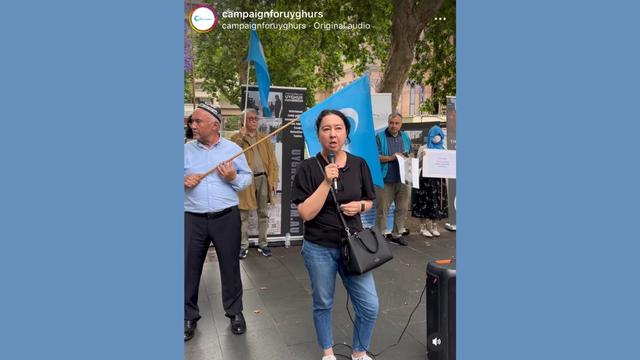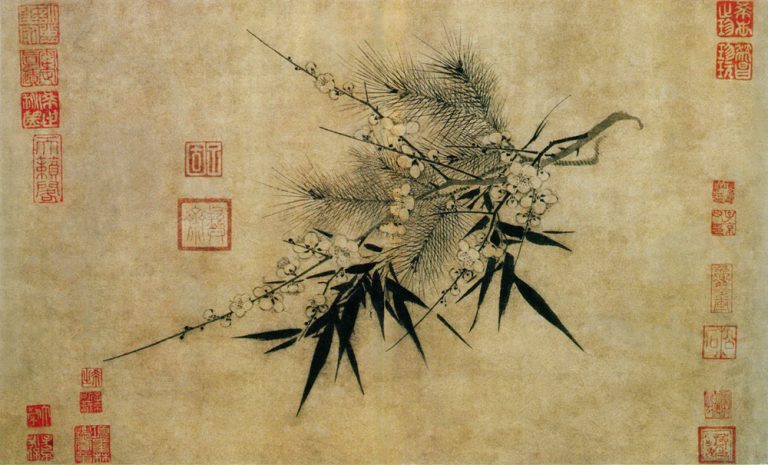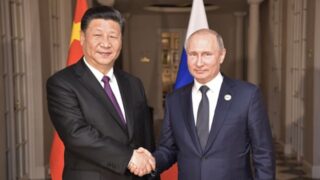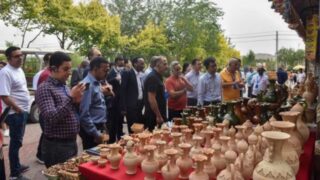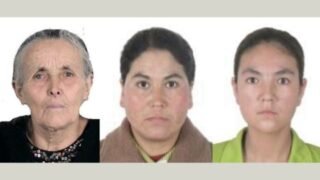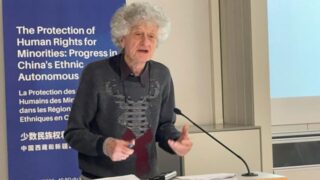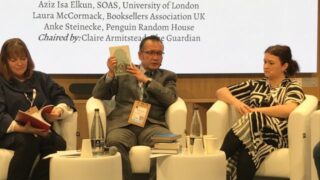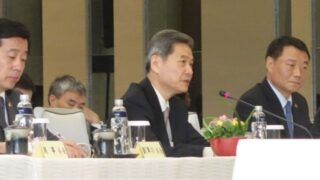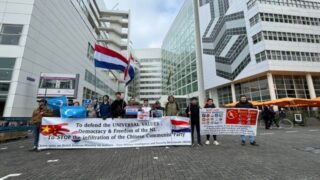A tragic fire has been the catalyst for mass protests in China and demands for the government to step down.
by Ruth Ingram


“We’re on the 16th floor and running out of oxygen. Our kids can’t breathe and are dying too. Come quickly!”
Advice on social media starts to come from every quarter. Someone on the first floor is worried they can’t contact anyone in the apartment. “I don’t know what’s going on.” Another: “They have no way to open the door. Can you try to break down the door?” “Hurry up, save the people on the 16th floor.”
A message goes up from officials on the ground to the desperate woman trying to save her children. She should dampen all the towels in the house, lie on the floor, and wait.


This family and others cooped up in the flats from the 15th to the 21st floor in the cultural center of the city, would wait for three hours while a fire engine came from 900 meters away. The truck was prevented from entering the housing community by chaotically parked cars, immobilized during the more than three-month COVID lockdown, and its jets of water failed to reach the flames.
Qemernisa Abdurahman and her three children were trapped by a door wired up from the outside and never made it out. They, together with more than forty others over five floors were burned to death.


The fatal fire in a residential tower block on November 24th in Urumqi, capital of the Uyghur region and seat of unprecedented clampdowns and persecutions since 2016, has been the spark for a wave of protests across China. Fury, bottled up during months of lockdowns where people have been locked into their homes, forbidden from going to work, deprived of vital medical supplies and hospital treatment, has finally spilled over onto the streets in angry, frustrated demonstrations. Officials immediately denied the COVID lockdown was to blame for the deaths, and now lay the fault at the feet of residents who they said hadn’t known how to leave their flats in an emergency.
No one believes the official account. Angry mobs have been rampaging through the streets of Urumqi gathering in the main square of the city to demand an end to the COVID lockdowns that have seen entire areas sealed off for more than three months. People have been dragged off the streets after positive COVID tests and taken to huge aircraft-hangar sized buildings where social media pictures show them on mattresses lining the floors waiting for up to two weeks until a negative test will set them free.


City residents, cowed by six years of terror and the shadow of 24/7 surveillance, knowing full well the consequences of civil disobedience, shouted slogans and demanded their freedom as armed police and hazmat-suited officials flooded into the city.
Social media sprang into action across the whole country and soon “Middle Urumqi Road” in Shanghai became a focus for candle-lit vigils, roughly hewn signs of solidarity and flowers, all of which were scooped up by police within minutes of appearing. Officials were quick by Sunday night to remove the road sign itself.


Protests and marches took place in Beijing, Chengdu, Wuhan, and Guangzhou with protesters in Shanghai calling for the removal of the Communist Party, for Xi Jinping to stand down and for “freedom!” Students across the nation, risking their academic futures, gathered giving speeches and chanting against the government. The country’s elite Tsinghua University students braved disciplinary action or worse by congregating and demanding an end to lockdowns.
BBC journalist Edward Lawrence was taken away in handcuffs while covering the Shanghai events and Reuters reported a student admitting that the Xinjiang accident had “pushed people too far.”
![A CCP anti-Taiwan propaganda poster where a girl urges “Little brother PLA [the Chinese Army]! Go quickly to liberate our little friends in Taiwan who are facing hardship” was posted on social media by protesters reworked to show the girl holding a picture of the Urumqi fire.](https://bitterwinter.org/wp-content/uploads/2022/11/CCP-anti-Taiwan-propaganda-poster.jpeg)
![A CCP anti-Taiwan propaganda poster where a girl urges “Little brother PLA [the Chinese Army]! Go quickly to liberate our little friends in Taiwan who are facing hardship” was posted on social media by protesters reworked to show the girl holding a picture of the Urumqi fire.](https://bitterwinter.org/wp-content/uploads/2022/11/CCP-anti-Taiwan-propaganda-poster.jpeg)
Twitter and Instagram have been awash with photographs and videos and users of the usually circumspect and heavily censored WeChat site, China’s major officially permitted social media forum, have devised a bevy of signals and tricks to voice their protests without incriminating themselves. Friends have been posting blank sheets of paper, a powerful symbol of censorship, messages containing allusions to extremely hot weather or thunderstorms and those who simply write “好好好好好好好,” “good, good, good, good, good.”


Renderings of the Chinese national anthem have been heard to ring out from the crowds urging people to “stand up, stand up, stand up those who refuse to be slaves!”
Officials in Urumqi have been quick to announce, not guilt for the fire deaths, but instead the results of a revised “scientific study” of the dangers of COVID-19 and the promise that from Monday transport would begin to run and shops would start to open.


Rahima Mahmut, U.K. director of the World Uyghur Congress and an exiled Uyghur herself, who also spoke to the BBC, said the protests in Urumqi and in other parts of the Uyghur region were the results of “multiple tortures” including “starvation, extreme cold and the inhuman measures of the lockdown policy” as well as the ongoing atrocities in the “concentration camps.”
She had estimated that more than forty people had died in the fire, and not ten as quoted by the local government, but officials had notified the local population that all those spreading a different narrative of events would “face consequences.”
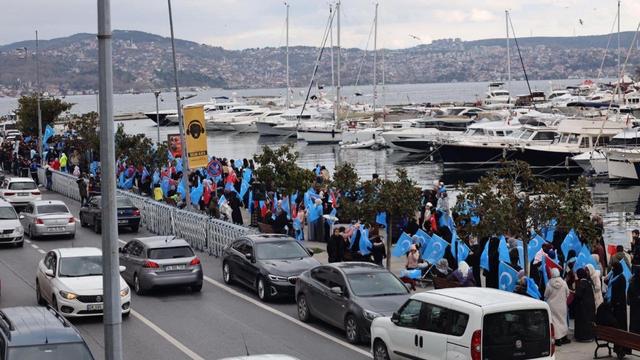

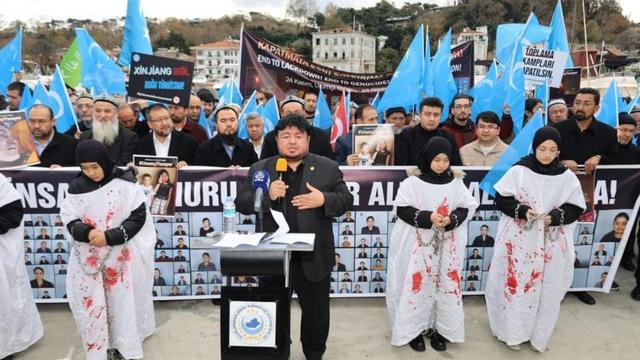

Asked whether COVID restrictions had hampered rescue attempts, her research from a variety of social media feeds showed that exit from apartments was impossible. “People were locked inside unable to escape,” she said, hence the high numbers of casualties.
She said that protesters had been mainly Han Chinese due to the “terror” under which Uyghurs had lived for the past few years and the fear that they might be branded as “separatists” or “terrorists” and taken to one of the camps and “locked up for years.” “Uyghurs just don’t have this kind of leverage to be able to go out and protest,” she said.


She was glad to see the protests on the streets “finally breaking out after three months of lockdown. People are suffering, businesses are suffering, people are facing starvation, they cannot go out to find food and have to rely on food being delivered to their door and people running out of money,” she said. “Chinese people finally saw that if they don’t stand up and go out and protest, they will face a similar situation to the Uyghurs.”


Many Chinese were attempting to leave the region, she said. Special certificates had to be bought under the table for “many thousands of yuan” just to get out of the region. “You can see their desperation,” she said, but lamented that her own people had no such route. “I feel very nervous and so terribly sad and helpless because there is no way that my people can escape too.”
